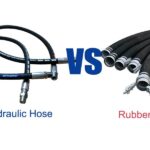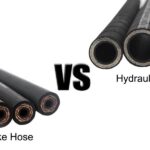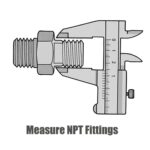Ducting Hose
Industrial flexible hoses are used for dust collection applications to connect tools and pipes. Made of durable, wear-resistant polyurethane material, they are reinforced with metal wires for long-lasting strength and static dissipation. The semi-transparent liner makes it easy to detect and clear potential blockages.
What is Flexible Ducting Hose?
Flexible Ducting Hoses are an essential part of many applications, including heating and cooling systems, as well as material transport. Sinopulse offers a range of flexible hoses that are both durable and affordable. Available hoses are designed for both light and heavy-duty applications, such as air ventilation, solid waste handling, material handling, industrial exhaust, high-temperature ventilation, and abrasive transfer. These flexible hoses are made from durable, long-lasting materials like rubber, PVC, Nomex, Hypalon, and thin metal sheets, which remain flexible enough for easy placement. This flexibility is the key feature of our flexible suction hoses, even when made from different materials.
Flexible Ducting Hoses are open cylindrical products used to transport a variety of media, including high and low-temperature air, dust, abrasives, larger non-fertilizer materials, and smoke. Typically, flexible suction hoses are made from rubber, plastic, and metal materials, each offering unique features and applications. For example, stainless steel ducts are ideal for high-temperature flexible hoses due to their strength and resistance to extreme temperatures. On the other hand, more durable hoses, like flexible plastic hoses, are excellent for dust collection. They can also handle harsh chemicals and toxic fumes due to their resistance to corrosion. It's important to choose the right hose material for specific applications to ensure a safe and healthy environment without worrying about dangerous leaks. One thing to remember is that, despite the different materials, flexibility is a common feature across all our hoses.
Type of Ductwork
First, choose the Ducting Hose based on the medium being moved—whether it's air, dust, materials, abrasives, high-temperature or chemical fumes. Then, factors like the required hose flexibility, wear resistance, size specifications, and budget will play a role in the selection of the hose. Depending on the application, you’ll need to carefully choose the material of the flexible hose to avoid costly mistakes. While each product offers different flexibility, every hose is designed to bend and move according to the user’s needs without compromising airflow or the flow of materials being transferred.
Metal Ducting
Flexible ducting is commonly used in air ventilation applications. However, because air temperature can vary greatly, it is important to find the right material that won't degrade under extreme temperatures. If the hose is not made from materials that can withstand extreme temperatures, high-temperature air could damage the hose. It is recommended to use flexible metal hoses for transferring air from point A to point B due to their heat resistance. Aluminum and stainless steel high-temperature flexible hoses are two options that can handle extreme temperatures. Aluminum can withstand temperatures as low as -100°F and up to 400°F, while stainless steel can handle temperatures as low as -400°F and as high as 1650°F.
While flexible ductings are important, many of our metal hoses don’t bend like lightweight plastic hoses, which may bend easily due to the stiffness of the material. Many flexible metal hoses are self-supporting but still flexible, as they can be bent into the desired shape and retain that form. This more rigid form of flexible ducting can be manipulated, offering unmatched stability and durability.
Rubber Ducting
Flexible rubber ducting made from rubber compounds, such as neoprene or thermoplastic rubber, offers both durability and flexibility. Rubber hoses are best suited for material handling applications due to their toughness and heavy-duty nature. Unlike metal hoses, rubber flexible hoses are not affected by the movement of abrasive materials passing through them. For example, while flexible metal hoses are strong and rigid, they can be weakened and scratched by the materials they transport. On the other hand, rubber flexible ducting can perform both light and heavy-duty tasks, from suctioning leaves to automotive applications under car hoods.
Rubber flexible ducting is the only type of hose available in multiple wall thicknesses. The thicker the hose wall, the less flexible it becomes; however, with different thickness options, operators can use rubber ducting in highly abrasive applications.
Plastic Ducting
Flexible plastic ducting hoses are commonly used for air movement, smoke handling, and material transfer, such as dust, leaves, and sawdust. The term "plastic" refers to hoses made from crush-resistant PVC and polyurethane materials. Flexible plastic hoses made from these two materials are highly resistant to corrosion from harsh chemicals, moisture oxidation, and pressure oxidation.
Flexible plastic duct hoses come in light, medium, and heavy-duty versions, depending on their intended use and application. Lighter plastic ducting is used for dust collection or air circulation, while heavier plastic hoses are typically used for transferring abrasive materials, hazardous chemicals, and smoke. However, compared to other types of hoses like rubber or metal, plastic duct hoses are more susceptible to damage from larger materials and abrasive corrosion. These flexible hoses are stretchable and portable, making them ideal lightweight ducting products for both commercial and residential spaces.
What Types of Rubber Are Used in Duct Hoses?
Thermoplastic Rubber (TPR)
Thermoplastic rubber is a relatively new type of rubber that combines certain qualities of plastic with the elasticity of rubber. It has the elasticity of vulcanized natural rubber or nitrile but also offers excellent flexibility, strength, and better moldability. Thermoplastic rubber has improved functional qualities and significantly lower material costs. Thermoplastic elastomers (TPE), sometimes referred to as thermoplastic rubber (TPR), are commonly used in hoses. The advantage of using TPE in hoses is its ability to stretch moderately and return to its nearly original shape, providing longer life and better physical range compared to other rubber products. Thermoplastic plastics also have a wider operating temperature range. Typically, thermoplastic hoses can effectively function between -60°F and +275°F. This is a high-quality material, as high-temperature rubber hoses made from TPE are much more affordable than those made from silicone. Key properties of thermoplastic rubber include excellent fatigue resistance, chemical resistance, impact resistance, and high recyclability. Overall, thermoplastic flexible hoses deliver better results at a lower price.
Neoprene Rubber
Neoprene rubber is a special type of synthetic rubber made from chloroprene material. It was first developed by scientists at DuPont (Ek Bolton), who created the first successful synthetic rubber known as neoprene. During wartime, neoprene was highly valued because the supply of natural rubber from South America and Africa was unstable. Neoprene rubber is known for its resistance to heat and chemicals, such as oil and gasoline, and has been used as an insulating material in machinery. This made it valuable during World War II and in the automotive industry. Neoprene rubber is a highly flexible and stable material, even when applied in thin layers and repeatedly bent. As a result, neoprene is often used as a sealing or gasket material to protect two hard surfaces from coming together. In flexible ducting, neoprene is often used as a coating added to fabric. Fabrics like polyester fibers offer flexibility and good fatigue resistance, meaning they don't easily tear or crack when bent. This makes them a great material for manufacturing flexible hoses. The industry often refers to "canvas" ducting, which is a fabric hose coated with an elastomer like neoprene. Polyester-coated neoprene hoses are used in material handling and air ventilation applications because they are durable and maintain flexibility when bent. Additionally, the thickness of the hose or the fabric's saturation can be modified with added coatings.
What is a Flexible Rubber Duct Used for?
Flexible Rubber Ducting Hoses have a wide range of qualities, making them suitable for various industries. Here are 5 applications where rubber duct hoses are commonly used:
- Air Ventilation
The demand for flexible ducting in air ventilation is high because it can ventilate large volumes of air while withstanding outdoor elements. Hoses used in temporary ventilation need to resist weathering and outdoor conditions. They also need to be highly compressible and flexible. Our ducting series consists of polyester fabric hoses coated with a single layer of neoprene and reinforced with spring steel wire. These neoprene-coated hoses are durable, compressible, and flexible. - Fume Handling
Both neoprene and thermoplastic rubbers offer excellent chemical resistance, making flexible rubber ducts like our Neoprene-Flex series an ideal option for handling chemical fumes. Neoprene is known for its resistance to petroleum-based solutions, which include many fumes produced by solvents and oils. Neoprene can also withstand methyl and ethanol, as well as some alkaline solutions. Neoprene ducting hoses are often used to create specialized rubber exhaust hoses. - Abrasive Dust Removal
This application is very important, particularly for thermoplastic and neoprene-coated fabric duct hoses. Woodworking dust, as well as sand and gravel by-products that are moved through hoses, can be very abrasive. Rubber is an ideal wear surface for handling this kind of abrasion. Flexible rubber ducting hoses are also very cost-effective, making them an affordable option for use as wear-resistant surfaces. - Trash and Leaf Collection
Thermoplastic rubber ducting hoses are perfect for this type of work. These Flexible Ducting Hose have excellent outdoor durability, high wear resistance, and great flexibility. TPR hoses also exhibit outstanding flex fatigue resistance, making them an excellent choice for collecting landscaping by-products and other debris. - Woodworking Dust Collection
Woodworking shops and factories need flexible ducting hose to clear out woodworking dust, which is associated with serious health risks such as cancer, irritation to the eyes, nose, and throat, dermatitis, as well as respiratory effects like reduced lung capacity and allergic reactions. Flexible rubber ducting hoses are an excellent wear-resistant choice for carpenters on a budget who need reliable dust collection hoses.



















